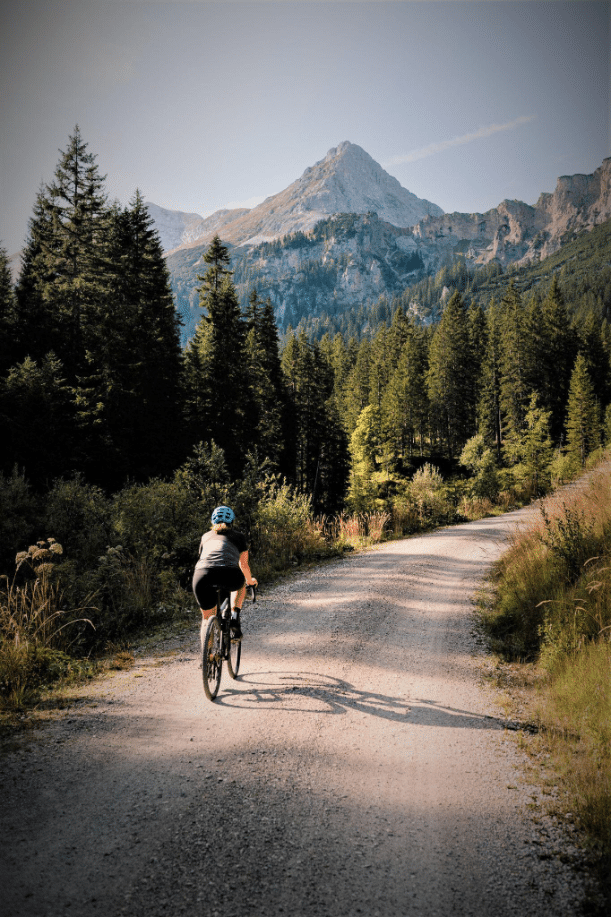Cycling is a fun and healthy activity that can be enjoyed by people of all ages and fitness levels. Whether you’re a beginner or an experienced cyclist, there are always new tips and techniques to learn that can help you improve your cycling skills and make your rides more enjoyable. That’s why we’ve enlisted the help of cycling expert Brook B. Taube to share his insights on cycling tips for beginners.
In this article, we’ll explore some of Brook’s top tips and recommendations for choosing the right bike, essential cycling gear, cycling technique, building endurance and strength, safety tips, maintenance and repair, and much more.
Choosing The Right Bike
When it comes to cycling, there are many different styles of bikes to choose from. Each style is designed to perform best under certain conditions. So it’s important to choose the right one for your needs. Some of the most popular styles of bikes include road bikes, mountain bikes, hybrid bikes, and city bikes. Road bikes are designed for speed and efficiency on smooth roads, while mountain bikes are built to handle rough terrain and trails. Hybrid bikes are an excellent all-around option. It is for those who want to ride both on and off-road. City bikes are perfect for urban riding and commuting.
One of the most important factors to consider when choosing a bike is finding the right size. A bike that is too small or too big can be uncomfortable and even dangerous to ride. Getting properly fitted for a bike helps ensure you acquire the right size. This can be done at a bike shop or by using an online bike fitting tool. The main measurements to consider are the frame size, standover height, and reach.
Investing in a good quality bike can make a big difference in your cycling experience. Brook Taube recommends looking for a bike with a lightweight frame. It should have high-quality components and good overall build quality. A good quality bike should also be comfortable to ride, with a well-designed saddle and handlebars. It’s also important to consider the bike’s braking and shifting systems, as well as the wheels and tires. That is to ensure they are suitable for your needs and riding style.
Essential Cycling Gear
Cyclists should have some essential gear when riding. That includes a helmet, cycling shorts, cycling shoes and pedals, gloves, sunglasses, water bottle and cage, cycling jersey, cycling socks, bike lock, bike pump, and repair kit.
Wearing a helmet is crucial for protecting your head in the event of a fall or accident. When choosing a helmet, look for one that fits snugly and securely. It must have ventilation to keep you cool during hot rides. Brook also recommends choosing a helmet with MIPS technology. That is designed to reduce rotational forces that can cause brain injuries.
Cycling shorts are an essential piece of gear for anyone who spends time on a bike. Look for shorts with padded chamois to provide cushioning and reduce friction. Choose shorts with a snug fit to reduce chafing and discomfort. Brook also suggests choosing shorts with reflective accents to increase visibility during low-light conditions.
Avid cyclists recommend investing in cycling shoes that are designed for your specific type of cycling, whether it’s road, mountain, or casual riding. Look for shoes that are comfortable, breathable, and have a stiff sole for efficient power transfer. When it comes to pedals, Brook suggests choosing clipless pedals for more efficient pedaling and better control.
Look for gloves with a snug fit and good ventilation to keep your hands cool and dry. For sunglasses, choose a pair with UV protection to protect your eyes from the sun’s harmful rays. Use glasses with a wraparound design to provide full coverage and reduce wind resistance.
Cycling Technique
As an experienced cyclist, Taube understands the importance of proper cycling techniques. Here are a few tips he recommends for optimizing your performance on the bike.
Proper body position is key to efficient and comfortable cycling. Brook recommends keeping your elbows slightly bent, engaging your core muscles for stability, and maintaining a neutral spine and relaxed shoulders to reduce fatigue and prevent injury.
Shifting gears can greatly improve your cycling experience, but it takes practice to do it effectively. Brook advises riders to start with a lower gear and gradually shift up as they gain speed. He also recommends shifting before a hill or incline rather than during to maintain a steady rhythm and prevent injury.
Effective braking is essential for safe and efficient cycling. Brook recommends using both brakes evenly rather than relying too heavily on the front brake. That can cause you to lose control. He also advises riders to practice emergency stops to improve their reaction time and ability to brake quickly and safely.
Safety Tips
Taube understands the importance of safety on the road. He recommends that all cyclists prioritize safety when riding, whether it’s by wearing a helmet, obeying traffic laws, or taking extra precautions when riding in certain conditions.
To stay safe while cycling, he recommends following the rules of the road. This includes obeying traffic signals and signs, riding with traffic, and using hand signals to indicate turns or stops. Cycling in groups can be a fun and social experience, but it also requires extra attention to safety. He also recommends that beginners ride in groups with more experienced cyclists to learn proper etiquette and safety techniques.
Even with the best planning and preparation, unexpected situations can arise while cycling. Riders should always be prepared for the unexpected by carrying necessary supplies such as spare tubes, tire levers, and a pump.
In a Nutshell
Cycling can be exciting, but it’s important to prioritize safety at all times. Following the guidelines and tips provided by Brook Taube can greatly enhance your cycling experience while reducing the risks of accidents or injuries.

